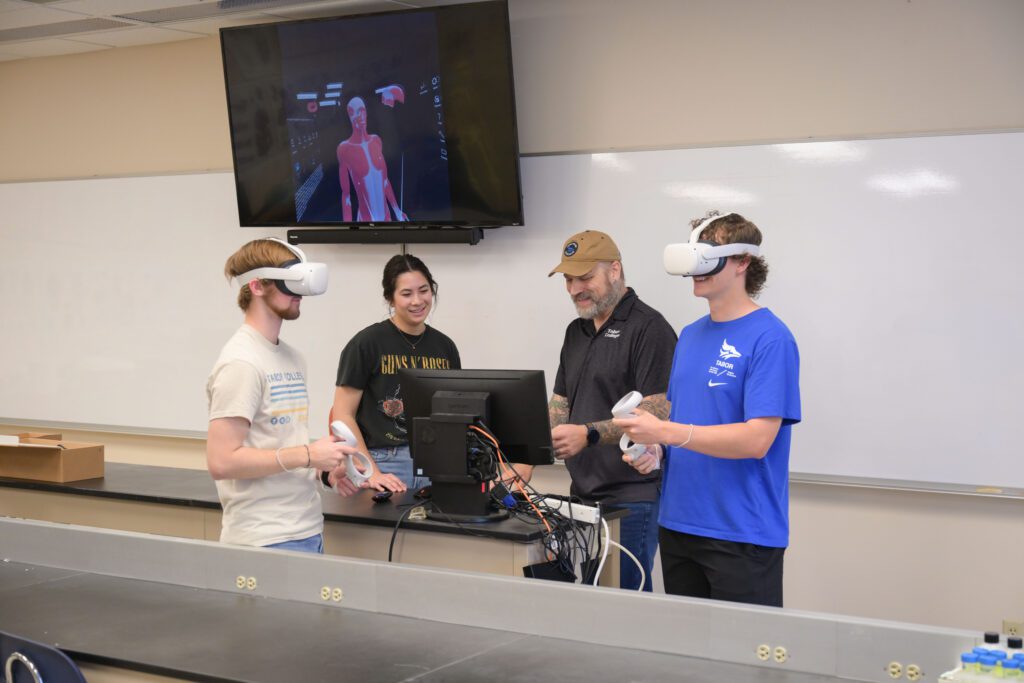
Ryan Calvert, Ph.D., wanted to diversify the offerings of Tabor College anatomy and physiology courses.
After exploring options on and off campus, Calvert engaged with virtual (VR) and augmented reality (AR) to help students. Since launching last fall, Tabor purchased a dozen applications of 3D Organon and VR headsets, Meta Quest 2.
Featured at 3dorganon.com, the application offers a diverse range of features in an all-in-one platform. With numerous built-in, lifelike models, students are immersed in a virtual world where they study the details of the human body.
“There are a lot of colleges our size that don’t have this opportunity,” said Calvert, assistant professor of biology. “From Ivy League to NAIA institutions, we’re part of a smaller network utilizing this technology.”
With AR, a skeletal model is projected in the room with cell phones, allowing each student to utilize the technology. VR features headsets and hand controls that put students in a ‘virtual room,’ making the experience even more detailed and hands-on.
Calvert detailed assignments such as exploring the spinal column, ear, and four separate eye models that students can completely dissect in VR space. He noted that students sometimes work in groups as they explore the technology.
“Students divide the workload and somebody is watching the computer of what’s projected in the VR headset,” Calvert said. “The student watching the computer takes a screenshot and labels them once they see the part they’re looking for.”
